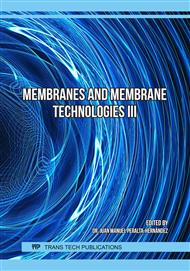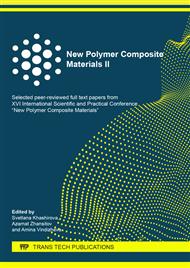p.21
p.28
p.40
p.45
p.51
p.56
p.61
p.69
p.76
Influence of Casting Method on Pervaporational Performanses of Polyheptylmethylsiloxane Membranes
Abstract:
A method of composite membrane obtaining effects on its transport properties. In the present work, for the first time, the influence of the method of applying a selective layer of polyheptylmethylsiloxane on the composite membrane pervaporation properties in the process of alcohol separation from water was studied. The comparison of two casting methods (kiss-coating and spin-coating) was conducted. Morphology of the obtained membranes and their separation properties during the pervaporation of the mixture of C2-C4 alcohols and water. It was shown that kiss-coating allows completely prevent leakage of the selective layer into the substrate pores. And, such a way, it allows to improve permeability of composite membrane (BuOH - 3.5 mol/(kPa·h·m2)). Besides, spin-coating method leads to higher selectivity (BuOH/H2O - 2.3). It is caused by blocking the swelling of that part of the selective layer that is locked in the pores of the substrate. Thus, the choice of the casting method can determine the compatibility of the composite membrane with a specific separation task.
Info:
Periodical:
Pages:
51-55
Citation:
Online since:
October 2020
Price:
Сopyright:
© 2020 Trans Tech Publications Ltd. All Rights Reserved
Share:
Citation:



